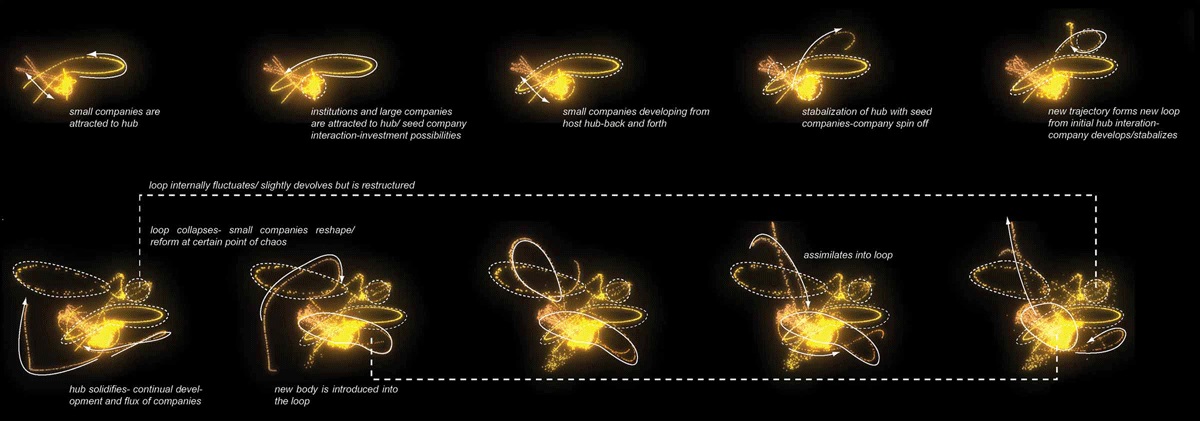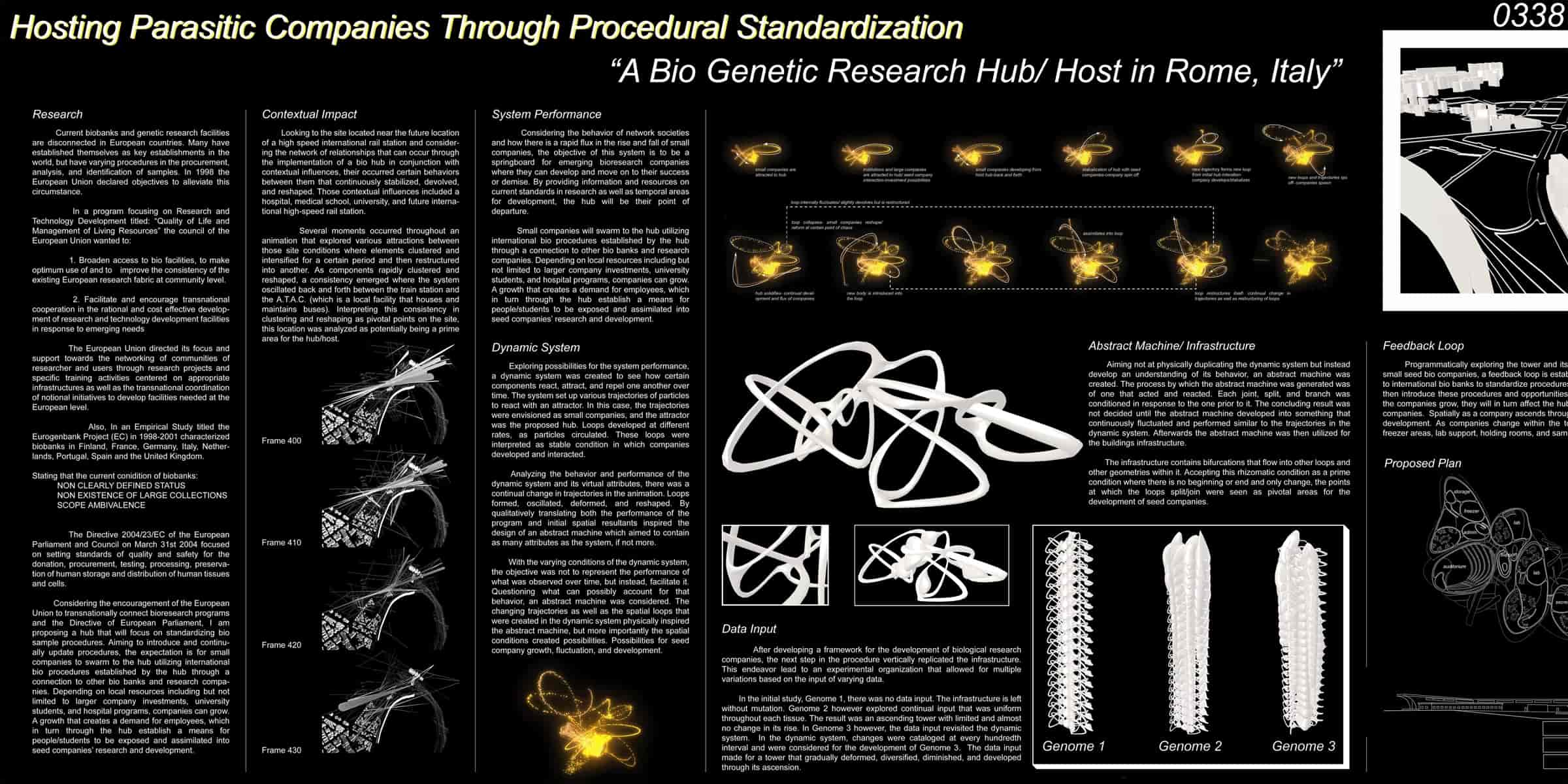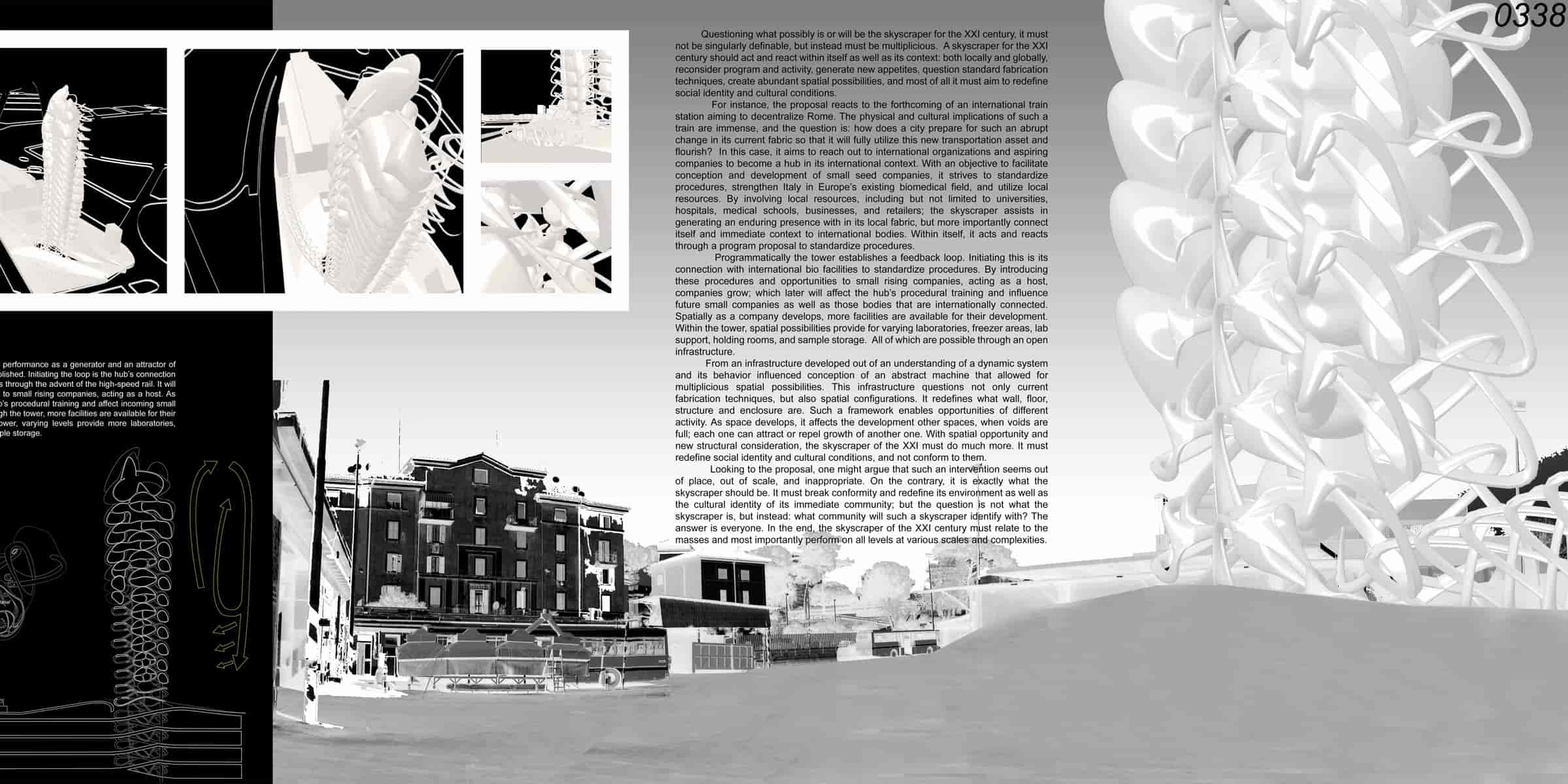Special Mention
2006 Skyscraper Competition
Michael Samula
United States

Questioning what possibly is or will be the skyscraper for the XXI Century… It must not be singularly definable, but instead, in a multiplicious manner. A skyscraper for the XXI Century should act and react within itself as well as its context: both locally and globally, reconsider program and activity, generate new appetites, question standard fabrication techniques, create abundant spatial possibilities, and most of all, it must aim to redefine social identity and cultural conditions.
For instance, the proposal reacts to the forthcoming of an international train station aiming to decentralize Rome. The physical and cultural implications of such a project are immense, and the question is: how does a city prepare for such an abrupt change in its current fabric so that it will fully utilize this new transportation asset and flourish? In this case, it reaches out to international organizations and aspiring companies to become a hub in its international context. With an objective to facilitate conception and development of small seed companies, it strives to standardize procedures, strengthen Italy in Europe’s existing biomedical field, and utilize local resources. By involving local resources, including but not limited to universities, hospitals, medical schools, businesses, and retailers; the skyscraper assists in generating an enduring presence within its local fabric, but more importantly connect itself and immediate context to international bodies. Within itself, it acts and reacts through a program proposal to standardize procedures.
Programmatically, the tower establishes a feedback loop. Initiating this is its connection with international bio-facilities to standardize procedures. By introducing these procedures and opportunities to small rising companies, acting as a host, companies grow; which later will affect the hub’s procedural training and influence future small companies as well as those bodies that are internationally connected. Spatially, as a company develops, more facilities are available for their development. Within the tower, spatial possibilities provide for varying laboratories, freezer areas, lab support, holding rooms, and sample storage. All of which are possible through an open infrastructure.
The infrastructure was developed thanks to an understanding of a dynamic system. Its behavior-influenced conception is that of an abstract machine that allows multiplicious spatial possibilities. This infrastructure questions not only current fabrication techniques, but also spatial configurations. It redefines what wall, floor, structure, and enclosure are. Such a framework enables opportunities for different activities. As space develops, it affects the development of other spaces, when voids are full; each one can attract or repel growth of another. With spatial opportunity and new structural consideration, the skyscraper of the XXI Century must do much more. It must redefine social identity and cultural conditions, and not conform to them. Looking at the proposal, one might argue that such an intervention seems out of place, out of scale, and inappropriate. On the contrary, it is exactly what the skyscraper should be. It must break conformity and redefine its environment as well as the cultural identity of its immediate community.


This work is licensed under a Creative Commons License permitting non-commercial sharing with attribution. https://creativecommons.org/licenses/by-nc-nd/4.0/



